
City’s History in Brief in Ho Chi Minh City, Hồ Chí Minh, Vietnam
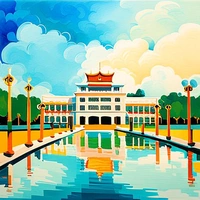
1. Reunification Palace
The Reunification Palace is a symbol of the end of the Vietnam War when a tank crashed through its gates in 1975. It offers a glimpse into the country's political history with its preserved rooms and war command center. Visiting here helps travelers understand Vietnam's journey to peace.
- Historical Significance: Site of the end of the Vietnam War.
- Architecture: 1960s design with preserved interiors.
- War Command Center: Underground bunkers and communication rooms.
- Cultural Insight: Reflects Vietnam's political history.
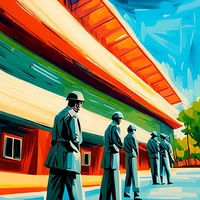
2. War Remnants Museum
The War Remnants Museum provides a sobering look at the Vietnam War through photographs and military equipment. It highlights the impact of war on civilians and the environment. This museum helps travelers understand the war's lasting effects on Vietnam.
- Exhibits: Photographs and military artifacts.
- Impact on Civilians: Focus on civilian experiences during the war.
- Environmental Effects: Displays on war's impact on nature.
- Educational Value: In-depth information on the Vietnam War.
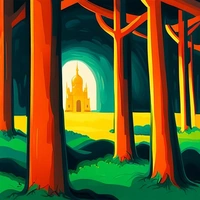
3. Cu Chi Tunnels
The Cu Chi Tunnels are an extensive network of underground tunnels used by Viet Cong soldiers during the Vietnam War. Visitors can explore the narrow passages and learn about guerrilla warfare tactics. This site offers insight into the resilience and ingenuity of Vietnamese fighters.
- Tunnel Network: Over 120 kilometers of tunnels.
- Guerrilla Warfare: Tactics and strategies used by Viet Cong.
- Interactive Experience: Opportunity to crawl through tunnels.
- Historical Context: Role in Vietnam War strategy.
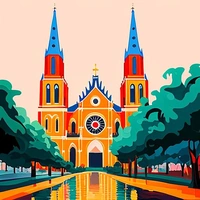
4. Notre-Dame Cathedral Basilica of Saigon
Built by French colonists, the Notre-Dame Cathedral Basilica of Saigon is a stunning example of neo-Romanesque architecture. It stands as a reminder of Vietnam's colonial past. This landmark helps travelers appreciate the blend of Vietnamese and French cultures.
- Architectural Style: Neo-Romanesque design.
- Colonial History: Built during French colonial rule.
- Cultural Fusion: Blend of Vietnamese and French influences.
- Religious Significance: Active place of worship.
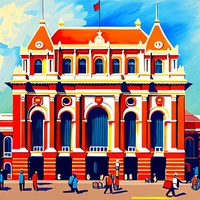
5. Saigon Central Post Office
Designed by Gustave Eiffel, the Saigon Central Post Office is a beautiful example of French colonial architecture. It remains a functioning post office and a popular tourist attraction. This site offers a glimpse into the city's colonial-era infrastructure.
- Architectural Design: Designed by Gustave Eiffel.
- Colonial Heritage: French colonial architecture.
- Functionality: Still operates as a post office.
- Tourist Attraction: Popular for its historical and architectural value.
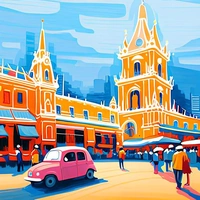
6. Ben Thanh Market
Ben Thanh Market is one of the oldest surviving markets in Ho Chi Minh City, offering a vibrant shopping experience. It reflects the city's commercial history and cultural diversity. This market helps travelers experience local life and traditional Vietnamese products.
- Historical Market: One of the oldest markets in the city.
- Cultural Diversity: Variety of goods and foods from different regions.
- Local Experience: Opportunity to interact with locals.
- Traditional Products: Offers traditional Vietnamese goods.
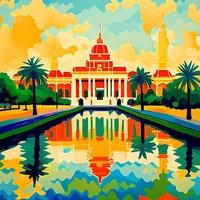
7. Ho Chi Minh City Museum
Housed in a neoclassical building, the Ho Chi Minh City Museum showcases the city's history from ancient times to the present. It features artifacts, photographs, and exhibitions on the city's development. This museum helps travelers understand the evolution of Ho Chi Minh City.
- Neoclassical Architecture: Housed in a historic building.
- Comprehensive Exhibits: Covers history from ancient to modern times.
- Artifacts and Photographs: Displays historical items and images.
- City Development: Focus on urban growth and change.
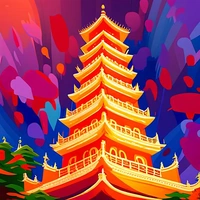
8. Jade Emperor Pagoda
The Jade Emperor Pagoda is a Taoist temple known for its intricate carvings and statues. It offers insight into the spiritual practices and beliefs of the local community. Visiting this pagoda helps travelers appreciate the religious diversity of Ho Chi Minh City.
- Taoist Temple: Dedicated to the Jade Emperor.
- Intricate Carvings: Detailed woodwork and statues.
- Spiritual Practices: Insight into local religious beliefs.
- Cultural Significance: Reflects religious diversity in the city.

9. Bitexco Financial Tower
The Bitexco Financial Tower is a modern skyscraper that symbolizes the city's rapid development and economic growth. Its Skydeck offers panoramic views of Ho Chi Minh City. This tower helps travelers see the contrast between the city's historical and contemporary landscapes.
- Modern Architecture: Iconic skyscraper in the city skyline.
- Economic Symbol: Represents economic growth and development.
- Skydeck Views: Offers panoramic city views.
- Historical Contrast: Shows contrast with historical sites.
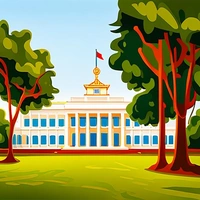
10. Independence Palace
Independence Palace, also known as the Presidential Palace, was the home and workplace of the President of South Vietnam during the Vietnam War. It is a symbol of the country's political history and the reunification of Vietnam. This site helps travelers understand the political changes in Vietnam's history.
- Presidential Residence: Home of South Vietnam's President.
- Political Symbol: Represents Vietnam's political history.
- Reunification: Symbol of Vietnam's reunification.
- Historical Tours: Guided tours available for visitors.
